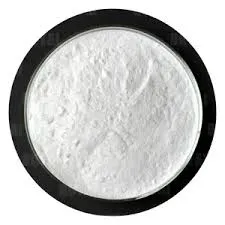
sep . 24, 2024 14:01 Back to list
Exploring HPMC SDS for Enhanced Solubility and Drug Delivery Applications
The Role of HPMC and SDS in Pharmaceutical Formulations
Hydroxypropyl Methylcellulose (HPMC) and Sodium Dodecyl Sulfate (SDS) are two crucial components in the field of pharmaceutical formulations, each serving distinct yet complementary roles. Understanding their properties and interactions is essential for developing effective drug delivery systems.
What is HPMC?
HPMC, a cellulose ether, is derived from natural cellulose through a series of chemical modifications. It is widely used in the pharmaceutical industry for its excellent film-forming properties, viscosity, and gel-forming ability. HPMC is non-toxic and biocompatible, making it ideal for multiple applications, including tablet coatings, controlled-release formulations, and as a thickening agent in suspensions.
One of the primary functions of HPMC in drug formulations is to control the release of active pharmaceutical ingredients (APIs). By adjusting the concentration of HPMC, formulators can achieve a desired release profile, allowing for sustained or delayed release of drugs over time. This property is particularly beneficial for chronic conditions where long-term medication adherence is crucial.
What is SDS?
Sodium Dodecyl Sulfate (SDS), on the other hand, is an anionic surfactant that is commonly used in both pharmaceutical and cosmetic formulations. Its amphiphilic nature allows it to interact with various molecules, aiding in solubilization and enhancing the bioavailability of poorly water-soluble drugs. SDS is known for its ability to form micelles, which encapsulate hydrophobic drugs, increasing their solubility in aqueous environments.
hpmc sds

In addition to solubilization, SDS has the potential to modify the permeability of cell membranes, which can enhance the absorption of drugs in systemic circulation. This property makes it an attractive candidate for drug delivery systems, especially for oral and transdermal routes.
Collaborative Synergy in Formulations
When combined, HPMC and SDS create a potent formulation matrix that can maximize therapeutic efficacy while minimizing side effects. HPMC can provide a sustained release of active ingredients, while SDS can enhance solubility and absorption rates. This synergistic effect is particularly beneficial for drugs that exhibit low solubility and variable bioavailability.
Moreover, the addition of SDS to HPMC-based polymeric systems can improve the mechanical properties of the film-forming matrices. This can lead to better processability during tablet manufacturing and enhanced stability of the final product. The interaction between HPMC and SDS can also influence the viscosity of the formulation, which is critical for maintaining the desired consistency in liquid formulations.
Conclusion
In conclusion, HPMC and SDS play significant roles in the development of effective pharmaceutical formulations. Their individual properties and potential for combined use can lead to improved drug delivery systems that optimize therapeutic outcomes. Continued research and innovation in this area are vital to overcoming challenges related to solubility, stability, and release kinetics. As the pharmaceutical industry advances, the collaboration of these components will undoubtedly contribute to the development of next-generation drug formulations, ultimately improving patient care and therapeutic effectiveness.
-
What is HPMC?
NewsJun.06,2025
-
Understanding Redispersible Powder: The Future of Construction Materials
NewsJun.06,2025
-
Understanding RDP Powder: The Ultimate Solution for Your Construction Needs
NewsJun.06,2025
-
Pure HPMC: The Ideal Solution for Modern Construction and Building Materials
NewsJun.06,2025
-
Methyl Hydroxyethyl Cellulose: A Versatile Chemical Compound
NewsJun.06,2025
-
Hydroxyethyl Cellulose Power: The Essential Chemical for Various Industries
NewsJun.06,2025







